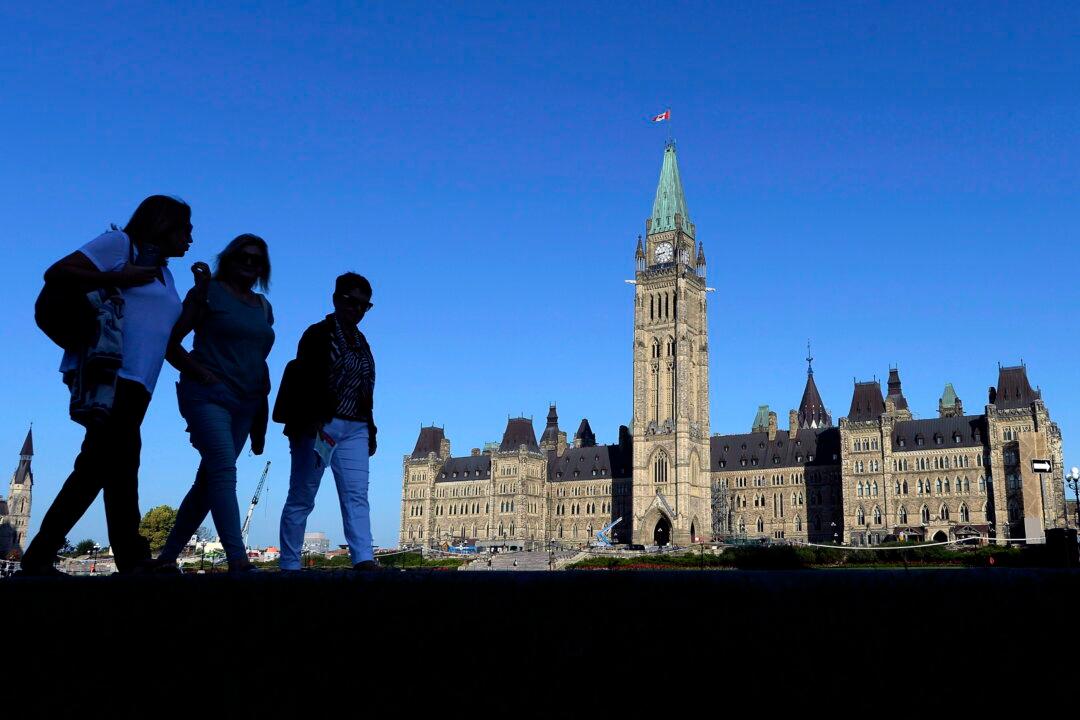Fifteen active and four retired police officers are taking the Ontario government to court over the province’s COVID-19 measures that “compels” officers to enforce rules that violate Charter rights and their oath to uphold the Constitution.
The officers state, in the notice of application (pdf) filed on April 20, that Ontario’s COVID-19 measures are “unconstitutional and of no force and effect” and force officers to violate the Charter rights and freedom and breach the oath they took to protect the people according to law.
The 19 applicants include active and former police officers from Toronto, York Region, Hamilton, Niagara, Ottawa, and Ontario and a retired corporal with the RCMP—with many listed anonymously under the name “John Doe.”
“Many of these regulations are not specific enough, they’re too vague and broad and aren’t clear enough to enforce uniformly and fairly,” said attorney Rocco Galati of the Constitutional Rights Centre during a press conference on April 29.
“So you get a wide range of actions being taken. And unfortunately, some of it is very hostile and violent on the part of the police, because they’re not interpreting the actual regulation, but they’re interpreting what the politicians and their supervisors think, often wrongly, what the regulations say,” Galati, who’s representing the 19 applicants, said.
“That’s not what a democracy is supposed to be. These regulations lead to police state and martial law measures,” he added.
The notice claims that the COVID-19 measures and emergency declaration by provincial governments don’t meet the criteria of an emergency under the Emergency Management Civil Protection Act.

A storefront on Roncesvalles Avenue displays a "for lease" sign as part of a protest against the Ontario government's pandemic lockdown rules in Toronto, Canada, on Nov. 24, 2020. Jody White/The Canadian Press
The imposition of lockdowns, stay-at-home orders, and curfews are not within the jurisdiction of the province as per Constitution Act, the notice also alleges. The law enforcement officers also stated the use of polymerase chain reaction (PCR) testing by the Ontario government leads to a “false positives” rate of 96.5 percent that translates into “rising” “cases,” and resulted in implementing “all measures of masking, social distancing, ‘lockdowns’ (closures).”
Christopher Vandenbos, one of the applicants and an active police officer in York Region, said the COVID-19 measures have caused a “visible” divide between officers who disagree with the policies and those who are totally invested.
“Vertical by the people that are in my circles, I’d say it’s about 50 percent,” Vandenbos said during the press conference. But obviously, I’m not connected with every officer, so I can’t speak to exact numbers on that.”
For those who disagree with the enforcement measures, “they have a real conflict of crisis, conflict of character as well, because this is so important to officers, for the most part, to remain steadfast and adhering to their oath, and when they’re being asked to not, that creates quite a bit of turmoil internally,” he added.
Another applicant, Sergeant Julie Evans with the Toronto Police Service, said she is prepared to risk her reputation and career to defend the rights of the people.
“That’s why I joined the career policing—was to protect people, to uphold those rights and freedoms, and to make sure that nobody would ever take advantage of somebody’s human rights,” she said.
The notice names Premier Doug Ford, the police chiefs of Toronto, York Region, Niagara, Ottawa, and Hamilton, and the attorneys general of Ontario and Canada as the respondents.





